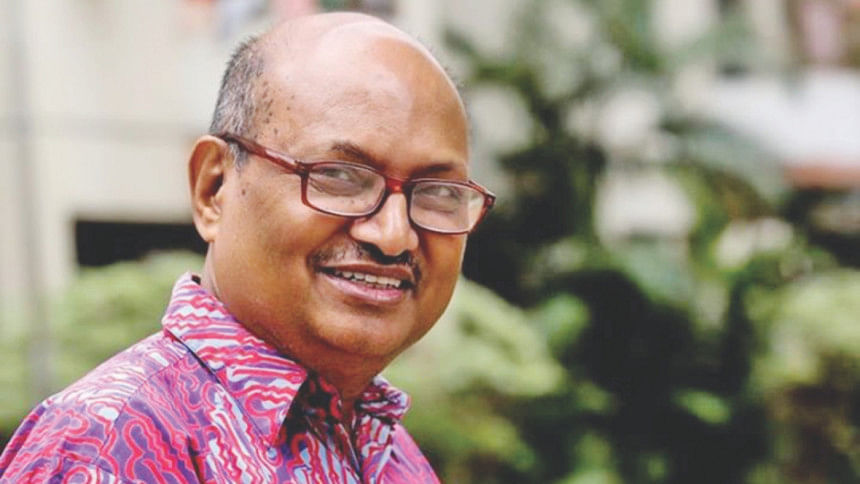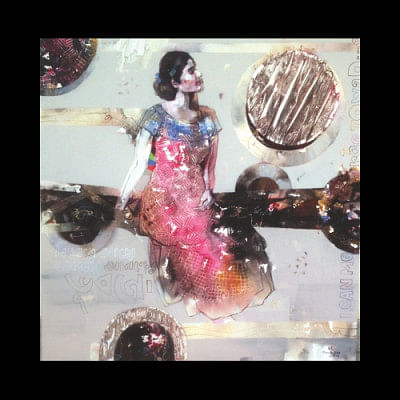Mingling geometry with organic themes

Noted artist Ranjit Das' works reveal a powerful interplay of figures and space. Devising figures, visages and various other forms traces his passionate journey towards experimentation. Melancholia, conflict and incoherent emotional states are often tinted in his paintings. Das is the proponent of an unrivalled style and expression that merges geometric shapes with organic themes.
Das started painting in the' 70s –an era when our art and literature was experiencing a renaissance. His canvas delves into the woes and bliss of the common people, clearly projecting their dreams and hopes.
Das closely observed the metamorphosis of socio-political and economic conditions. As an exponent of modernism, he has carved a niche in the country's history of art. It is apparent that his working style gradually changed after he did his Masters from MS University, Baroda, India in 1981. He was a direct disciple of famous Indian artist KG Subramanyan.
Das also started learning Rabindra Sangeet at Chhayanaut in the ' 70s. He continued training there for three years and took part in Borshoboron programme at Ramna Batomul, rendering choral and solo songs. He fondly remembers Tagore songs of various Parjaya especially Prakriti and Prem Parjaya songs including, “Bohu Juger Opar Theke Ashar Elo”, “Ami Chanchal Hey”, “Biroho Modhur Holo Aji”, “Pran Bhoriye Trisha Horiye” and “Tumi Robe Nirobe”.

“The influence of Tagore is in our veins. The enduring culture of Bangalees has been established and nurtured by Tagore, Nazrul, Jibanananda Das, Jasimuddin and others. Tagore pioneered modern literary practice. Our practice of art and lifestyle are greatly inspired by his boundless creative genius. Tagore portrayed painting in his songs and poems while Jibanananda did the same in his poetry,” said Das.
Elaborating the language of art together with the imageries visualised in the poems and songs of Tagore, Das asserted, “Tagore's heredity, family ambience, talent, wisdom and spiritualism are so vast that we hardly understand his paintings. The mysterious use of colours, offerings of devotion, romanticism and softness in presentation have made his paintings unique. Tagore's creation of melodies and portrayal of paintings traces many ups and downs and subtle senses of his life. The idyllic landscapes of Shantiniketan and Shilaidaha inspired him greatly. Above all, Tagore eschewed conservativeness in his creative ventures; that's why, he surpassed all and emerged as Bishwakobi (the poet of the world).”
“Art, thoughts, society, the doctrine of development and facets of human lives are being transformed. The newer trends of artistic expressions, created by present-day artists, attract me. On the other hand, I feel a close attachment to the cultural roots and heritage of my country. My paintings speak of the harmony between the two. I am very fond of natural and organic elements, which I try to incorporate into my paintings. I also try to retain softness and the aesthetic beauty in my works. Our way of living and the natural environment are inseparably connected; like we want to return home for shelter; again, we come out of home to get in touch with nature,” concluded the artist.

 For all latest news, follow The Daily Star's Google News channel.
For all latest news, follow The Daily Star's Google News channel. 



Comments